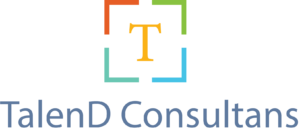[ad_1]

Artificial intelligence is transforming the talent management game—from recruiting to team building to succession planning. AI is also proving to be a powerful ally in retention engagement initiatives as well.
Meghan M. Biro, analyst, brand strategist, podcaster and TalentCulture chief executive officer, was explaining how technology has great potential to persuade workers not to opt out and move to another company.
She has a kindred spirit in Brad Sutton from the Strategic Accounts team at Eightfold.ai. The talent intelligence platform helps enterprises take advantage of artificial intelligence to hire, engage and nurture talent.
They keyed on the trend in today’s world of work: Employees expect companies to provide an opportunity for growth.
A study noted in Forbes shows 78 percent of employees surveyed during the pandemic believe employers should help them become better off than they were before.
“Organizations don’t necessarily know what skills each person has mastered today,” Sutton said. “Internally, we don’t do a good job of understanding all the things we’re each capable of tomorrow.”
Frequently, organizations struggle with talent management, a casualty of their focus on products and services.
Companies hire people to do their jobs, putting the onus on workers to know how to manage themselves and get their tasks done. The thought is, if people are talented, they’ll know what to do and how to do it.
Give workers an assist
“Talent management isn’t just about managing,” Biro said. “It’s got to be about helping people grow—or watch them either stagnate or leave, or both.
“Organizations don’t always look at problems at scale,” she said. “They look at each problem separately, but that doesn’t help your overall understanding of your talent management strategy.”
The solution rests with corporations understanding their most important resource.
“A huge problem: how to reskill your existing people to stay relevant,” Biro said. “We tend to not look at the full scope of what employees have done to know what they need. Leveraging AI capabilities can find the gaps.”
The individuals tend to get lost in a whirlwind of numbers.
“Talent acquisition teams are oftentimes overwhelmed—or underwhelmed—by the job posting responses and are not set up to quickly sort or rediscover talent,” Sutton said.
“If underwhelmed, the cost per hire goes up or the jobs go unfilled,” he said. “AI can absolutely help fill the gaps. That black hole—applicant tracking systems—is filled with gold waiting to be rediscovered.”
Leaders need to be aware of and involved with the inner workings of their organizations. The more they know about their people and their issues, the better they can devise strategies that address employees’ pain points.
“Leaders need to set a course for strategic talent management—and then see how it can be scaled to reach the whole present and future workforce,” Biro said.
“Diverse organizations perform 1.7 times better than their industry peers, according to a Bersin report,” she said. “If you’re ambitious for your organization, use your leadership to push for diversity.”
A tool for all leaders
This must be a consistent, daily practice.
“Talent intelligence seems like an approach every leader should want to be using,” Biro said. “Fully glean people’s capabilities based on everything they have done and what they may be able to do.”
Knowledge of the workforce in general is a good beginning.
“It really starts by understanding what people can do and what they are capable of in the future,” Sutton said. “Then understand the work that needs to be done. Once you know needs and capabilities, you can plan.
“Companies also need to do a better job of communicating opportunities to their employees,” he said. “It’s often easier to find a job someplace else than within your own company.”
Businesses are often done in by clinging to outdated thinking.
“Create opportunities that are approachable from non-traditional backgrounds,” Sutton said. “Don’t look at the job title—work history. Look at capability.
“It’s amazing how simple—and often overlooked—a regular check-in is,” he said. “Yet, it’s the most basic people management skill that yields so much information.”
No matter where they are in the workforce, employees need support.
“Not everyone is a good self-advocate,” Sutton said. “If someone doesn’t have a leader advocating for them, that person is in danger of being overlooked.”
Effective versatile systems
Any organizational skills or competency analysis is a snapshot in time. Effective talent management strategies are designed to support continuously evolving business needs as well as ever-changing workforce competencies.
“Without the use of artificial intelligence, there is no way to stay on top of the capabilities inside your organization in context with what’s evolving outside your organization,” Sutton said. “As new needs emerge, how will you know who can perform inside or outside or who could learn it?”
Communication is the first step of any strategy. You can’t know how to devise the best way to promote smarter talent if you’re dumb about challenges facing people you already have. Then build on those insights for future benefits throughout the organization.
“Upskilling should be a core strategy for talent management,” Biro said. “Anticipate the future skills you’ll need. Then start offering digitally based, easy-to-access development opportunities. See how many people jump on board.
“Don’t be afraid of AI,” she said. “It’s not just for hiring. It’s for management as well. It can generate key insights that can help with building teams, with engagement, with retention.”
Investing in people today will serve companies well going forward.
“Focus on building a stronger and more collaborative workforce for the future,” she said. “Address inclusiveness and ensure diverse populations are well represented. I can’t stress that enough.”
That brings everything back to embracing and using the technology at hand.
“AI can identify skills gaps, recommend development and uncover hidden and unknown talent,” Sutton said. “Opportunity should be about what you can do versus who you know.”
[ad_2]
Source link






